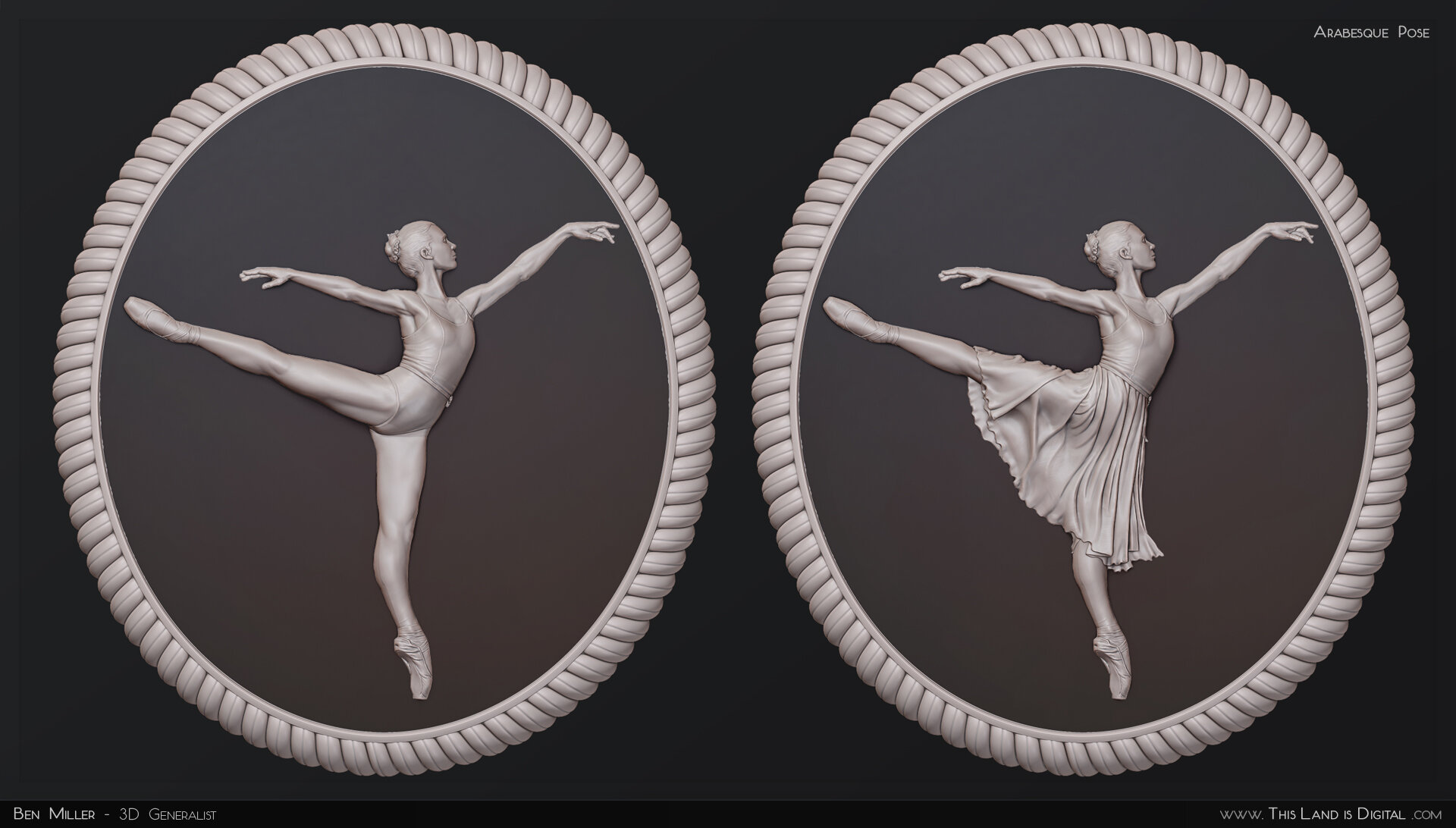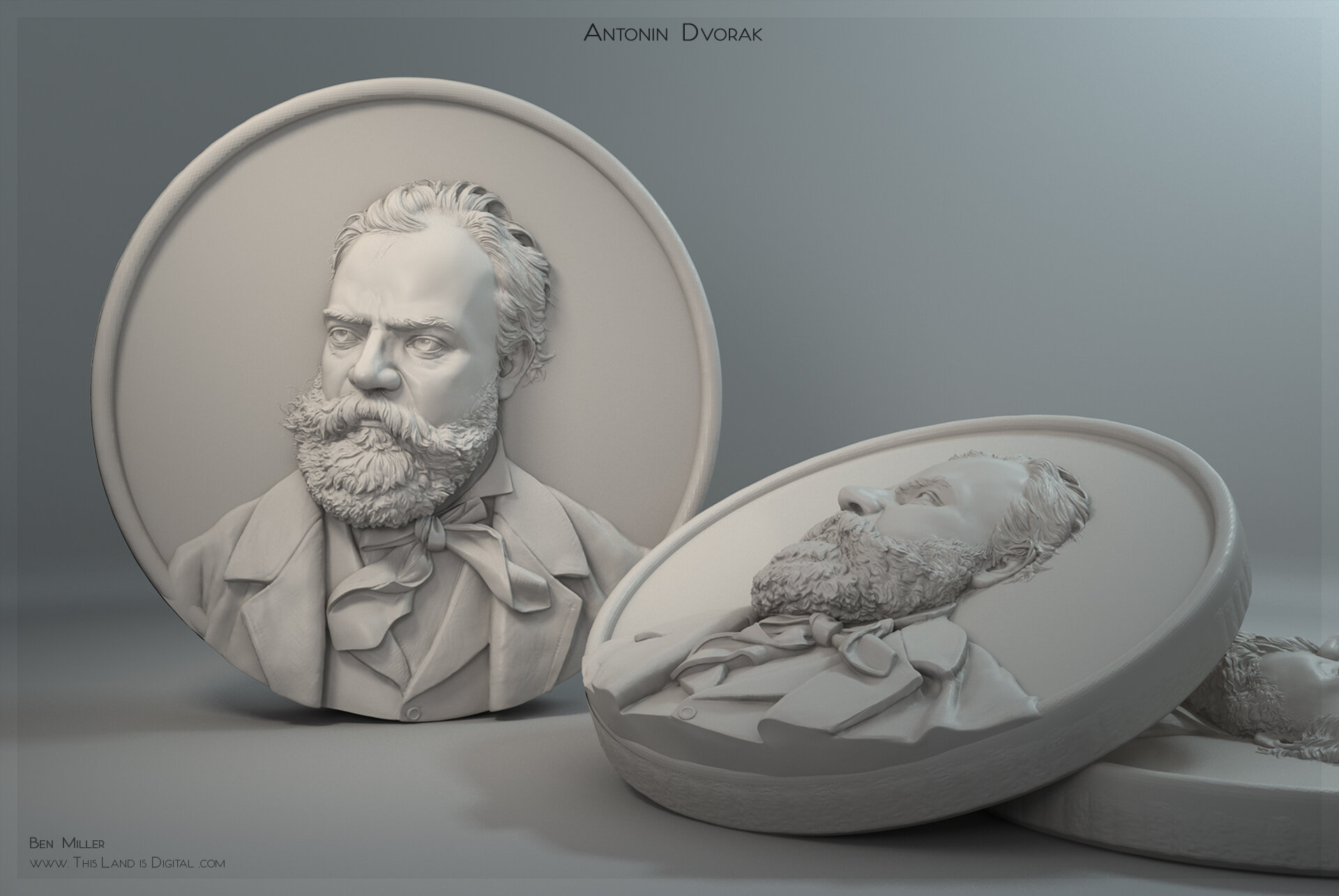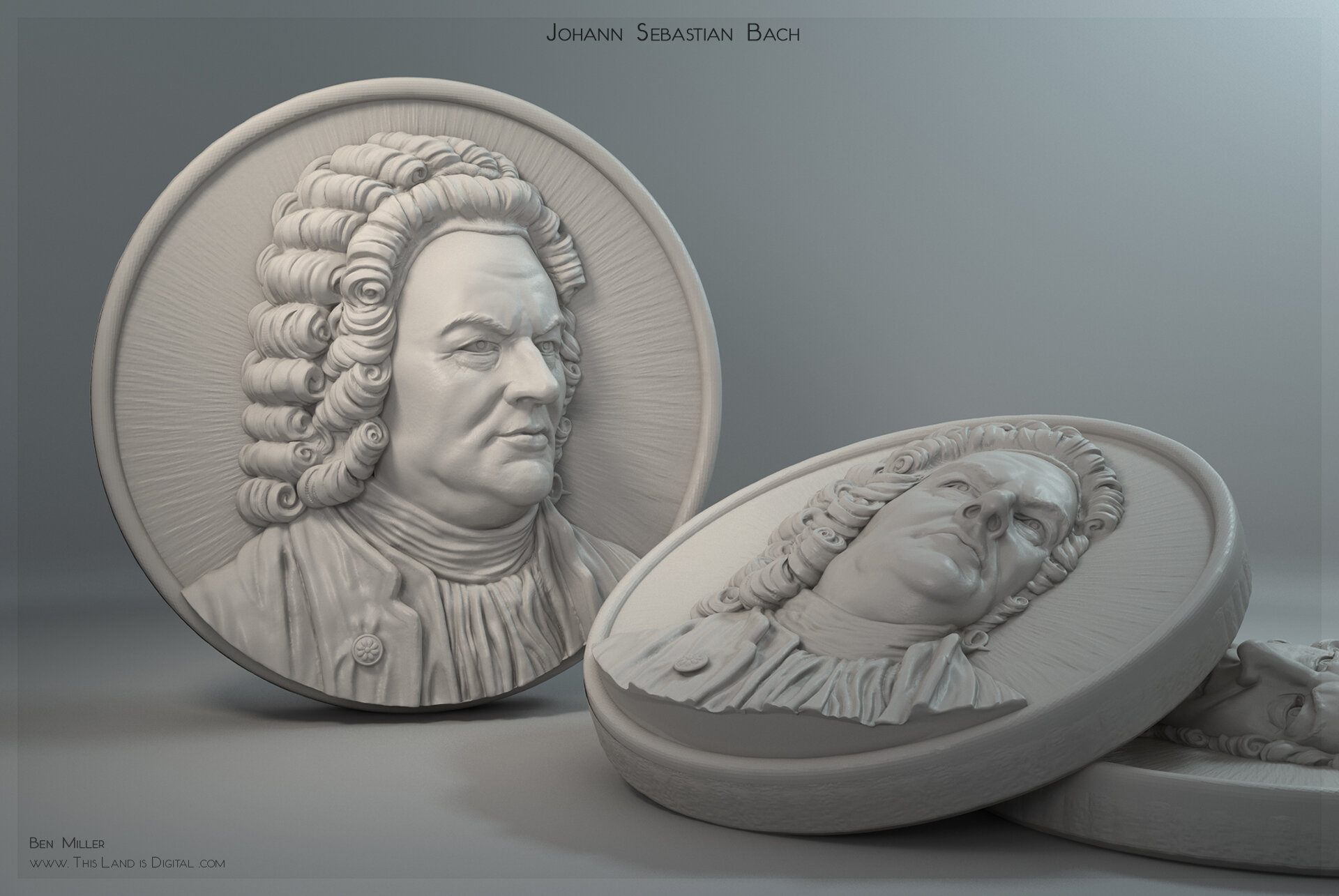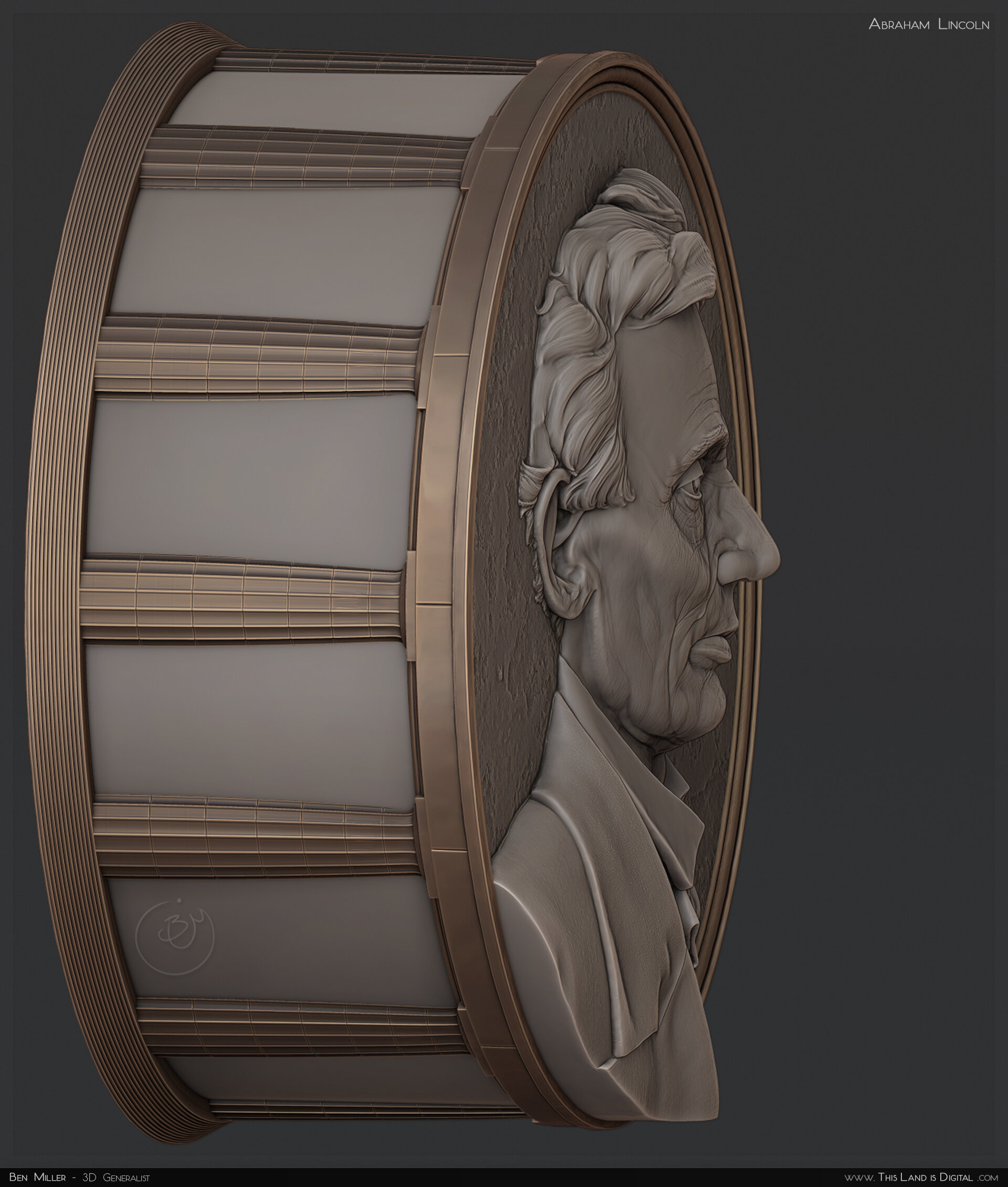Relief Sculptures
ZBrush, Photoshop (2012 - 2016)
In my last year or two of college I became enthralled with digital sculpting. At about the same time, I started a series of commissioned relief sculptures for Robin Lehman.
Client Requirements
We primarily produced a series of portraits featuring historical music composers. Other subjects included a grasshopper, a rhinoceros, ballet dancers, Abraham Lincoln, a toad, and an old photograph.
Each piece I was asked to create was 3D printed through an online service, then used as a mold to cast solid glass versions. All pieces were designed to be in a relatively deep relief and delivered as ZTools.
Design Challenges
Learning to Sculpt: These pieces were among the first sculpts I had ever produced.
Poorly Documented: I largely learned the relief sculpting process through experimentation. My early attempts began with fully 3D busts, which were then flattened into the final relief using a combination of subdivision levels in ZBrush and lattices in Maya. Later, as I grew comfortable with the medium, I sculpted directly in relief on a specially prepared disc.
Limited Upload Size: I designed a sculpting base plate that shifted more than 90% of its total triangles to its front-facing surface. This ensured that the portrait itself was making use of as much of the available geometry as possible, long before I had to resort to decimation.
Printing Costs: The cost of a 3D print depends on its volume. My client regularly relied on me to hollow our pieces in a way that wouldn’t collapse the print, leave holes, or consume our geometry budget on internal surfaces.
Irregular Angles: Most reliefs are directly from the front or the side. My client instead chose angles that were less rigid, requiring a more technically complex workflow.
3D Printing: Printing comes with its own set of stringent requirements. I had to avoid floating or overhanging forms, holes in the mesh, and various geometry artifacts as well as checking for mesh thickness around every detail.
Research: Most of my subjects lived around or before the introduction of photography. Some, like Bach and Beethoven, are known only through paintings. I began each piece by searching out the most honest depictions I could find at the highest resolutions with as little post processing as possible.
Hair, Hair, Everywhere: Sculpting the many diverse hairstyles of my subjects using solid, 3D print friendly forms was perhaps the most difficult part of every piece. I tackled Beethoven’s snakes, Bach’s wig rolls, Dvorak’s foreshortening beard, and Fanny’s wreath of flowers. Each was a wholly new challenge.












